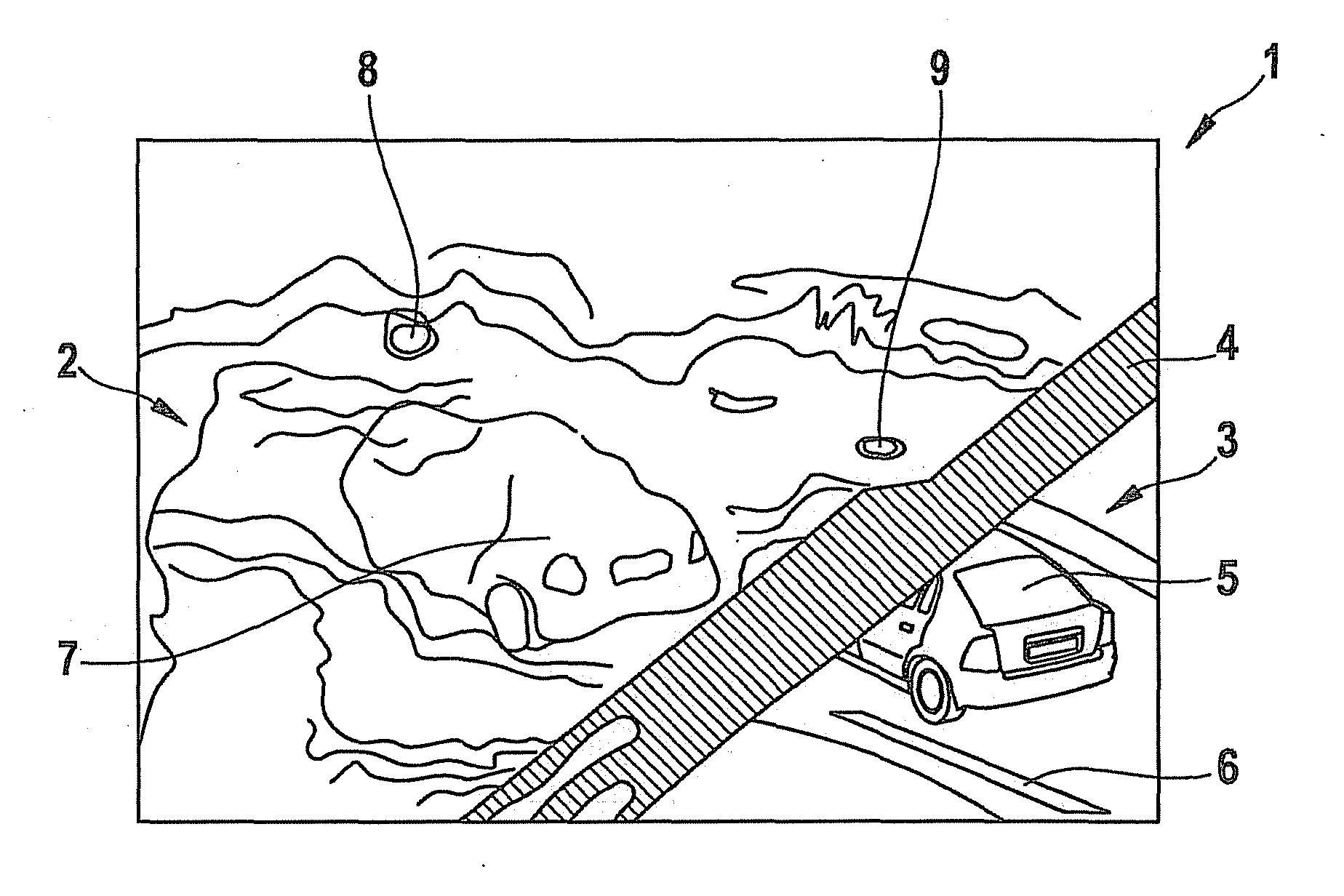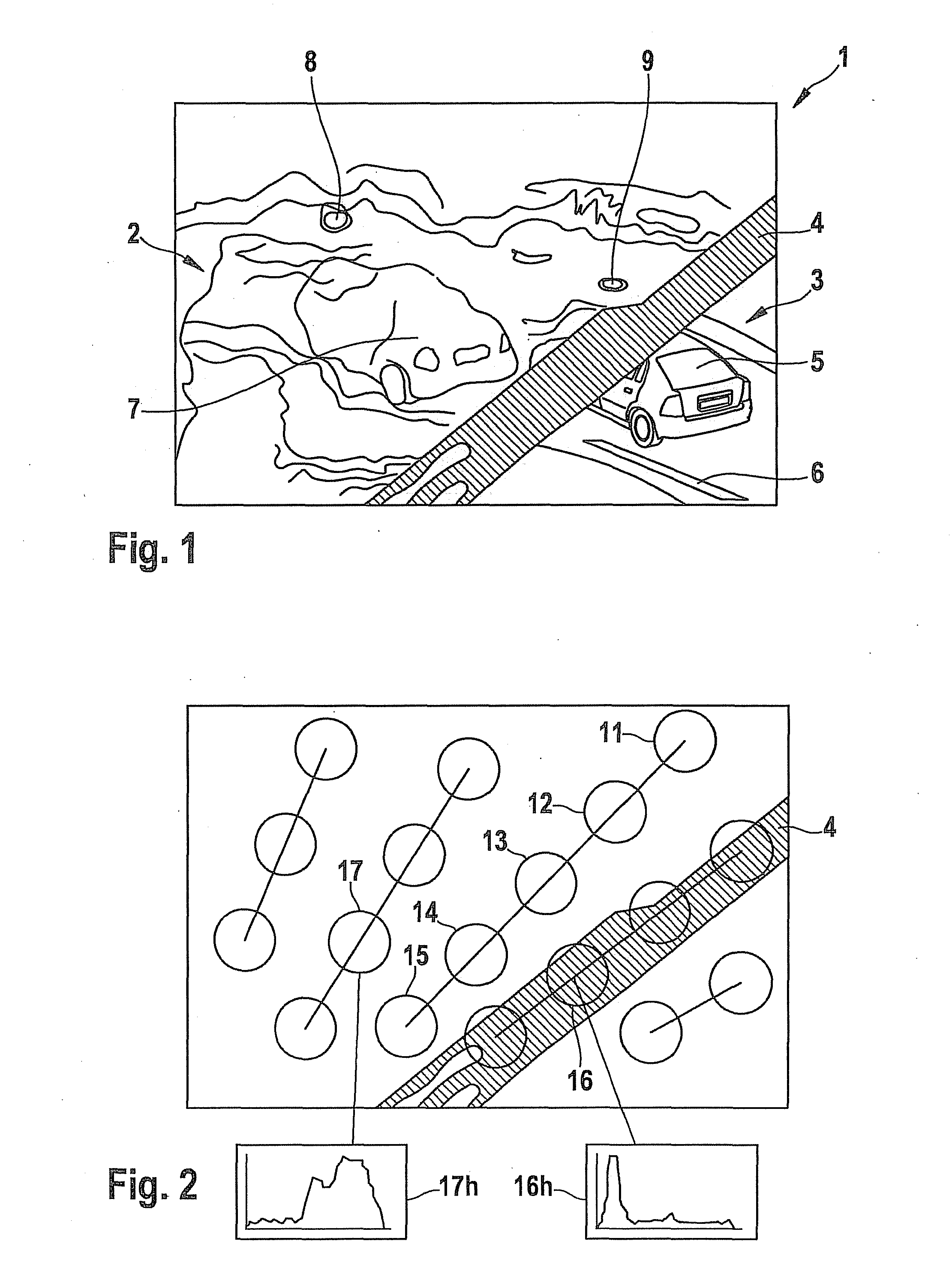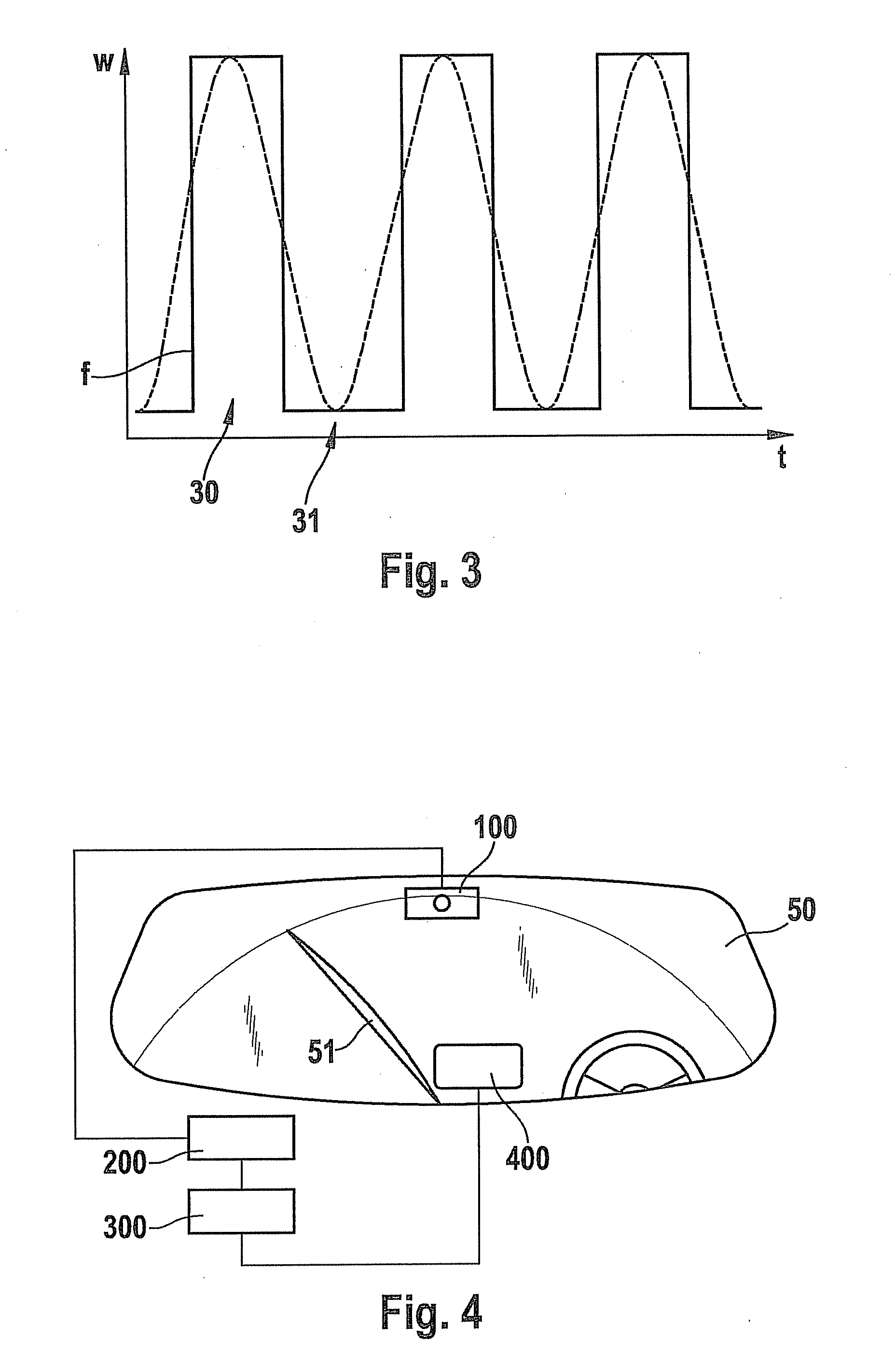Method and device for processing recorded image information from a vehicle
a technology for recording image information and vehicle, which is applied in the direction of vehicle cleaning, television systems, instruments, etc., can solve the problems of no longer being able to recognize center lines, unable to achieve any improvement in driver assistance function, and unable to achieve the effect of improving driver assistance function
- Summary
- Abstract
- Description
- Claims
- Application Information
AI Technical Summary
Benefits of technology
Problems solved by technology
Method used
Image
Examples
Embodiment Construction
FIG. 1 shows a schematic camera image 1, which is used for a driver assistance system such as RSR, LDW or LKS. Camera image 1 has an image area 2 having very poor quality and an image area 3 having better quality. The two image areas 2 and 3 are separated from each other by a windshield wiper shadow 4, windshield wiper shadow 4 gliding from right to left across image 1. In better-quality image area 3 there are individual image components 5 and 6 present which may be recognized as the rear deck of a vehicle and as a road marking. In poorer-quality image area 2 an image component 7 is likewise visible, which is recognizable only vaguely as the rear deck of another vehicle, because rain on the windshield through which image 1 is recorded distorts the view beyond recognition. In addition to the distortion, short-lived water drops 8 and 9 are present in poorer-quality image area 2, which act like lenses and focus light from preceding vehicles and may blind an exposure control for the cam...
PUM
 Login to View More
Login to View More Abstract
Description
Claims
Application Information
 Login to View More
Login to View More - Generate Ideas
- Intellectual Property
- Life Sciences
- Materials
- Tech Scout
- Unparalleled Data Quality
- Higher Quality Content
- 60% Fewer Hallucinations
Browse by: Latest US Patents, China's latest patents, Technical Efficacy Thesaurus, Application Domain, Technology Topic, Popular Technical Reports.
© 2025 PatSnap. All rights reserved.Legal|Privacy policy|Modern Slavery Act Transparency Statement|Sitemap|About US| Contact US: help@patsnap.com



